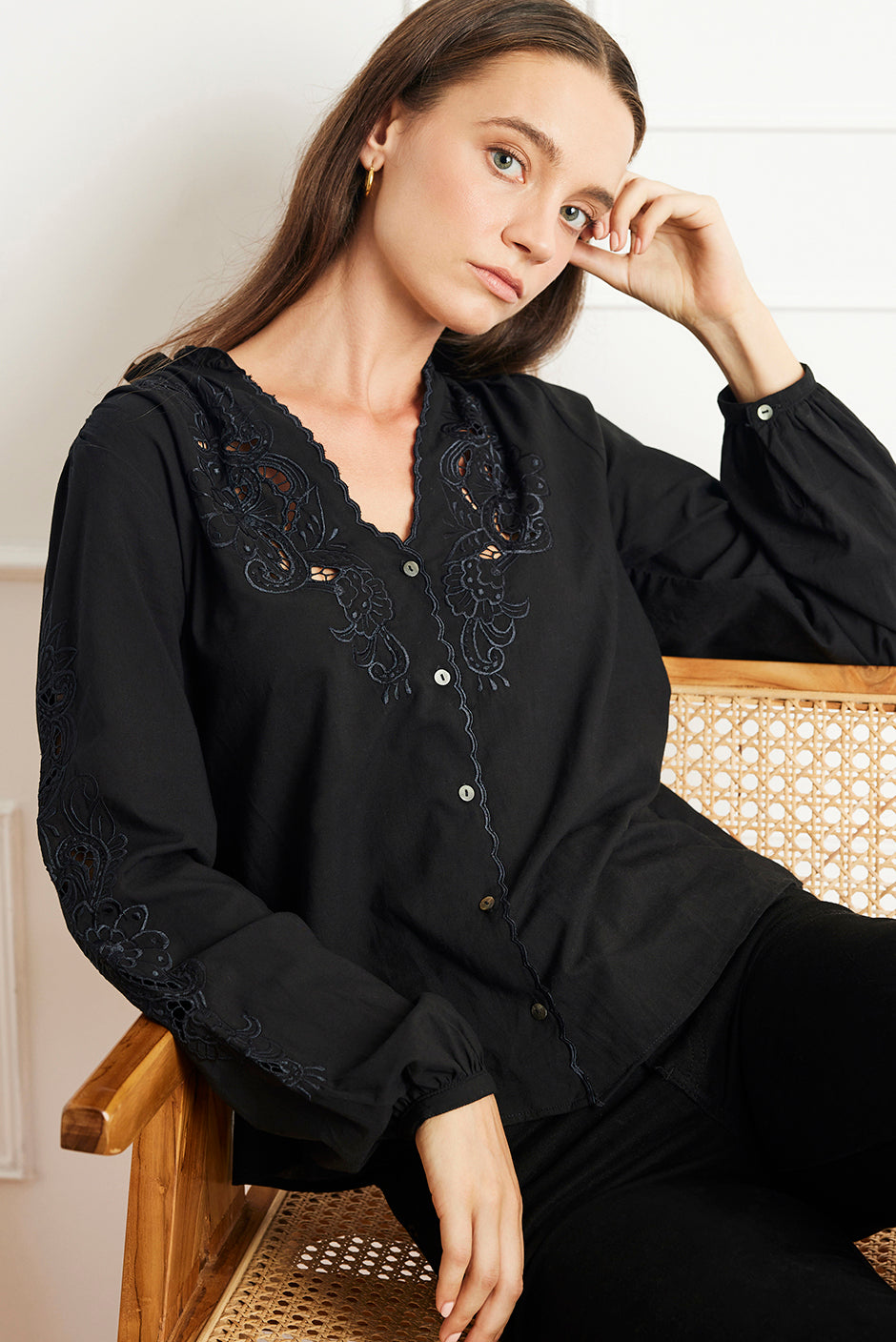-FREE SHIPPING ON U.S. ORDERS OVER $150. ECO-FRIENDLY PACKAGING ALWAYS- JOIN PANEROS REWARDS-
-FREE SHIPPING ON U.S. ORDERS OVER $150. ECO-FRIENDLY PACKAGING ALWAYS- JOIN PANEROS REWARDS-
Shop
How to Care for your Clothes more Sustainably

Tips and Best Practices for Greener Garment Care
Did you know every time we do laundry, our clothes release tiny microfibers including plastics? These tiny microfibers flow through our wastewater treatment facilities and into our waterways, like our oceans, rivers, and lakes. With the help of microfiber catching laundry balls, we can help eliminate the microfibers in our laundry from getting into our beautiful waterways (and ultimately away from the fish we eat). Most of these products retail for under $40 so it's a inexpensive way to do your part, and something we think everyone can do for many different clothes.
For some of our pieces, like the hand beaded Kaia Shirts, they require dry cleaning only. It may (or may not!) surprise you to know that not all dry cleaners are equally responsible for our planet.
Did you know that the process of using chemicals instead of water to clean clothes dates back to the Romans to clean their togas? The process of dry cleaning has come a long way since the Roman days. In the 1930's a chlorinated solvent, perchloroethylene, became the leading method for cleaning fabrics without using water. Still today, nearly 80% of all dry cleaners use the perchloroethylene solvent even though the United States Environmental Protection Agency (EPA) considers "perc" both a health and environmental hazard. It took decades for the U.S. EPA to start regulating dry cleaning chemicals and soon began to advise commercial cleaners to use safer, more environmentally friendly solvents.
Green dry cleaning refers to any alternative dry cleaning method that doesn't involve the use of perc. Even though there are 4 methods of alternative cleaning offered in the U.S., the two that are the most eco friendly for the planet and for consumers (and what we would suggest you check with your cleaners if they practice) are "wet cleaning" and "liquid carbon dioxide cleaning."
Wet cleaning is simply a more gentle way of home laundering, but uses specialized detergents that are more mild than traditional at home cleaners. The process is similar to spot cleaning, and requires special machines to work well.
Liquid carbon dioxide cleaning is a method that uses CO2 as the solvent with the detergent. Clothes are placed in what looks similar to a traditional dry cleaning machine and the ambient air is sucked out. Next, the cleaning drum is injected with carbon dioxide (CO2) in both gas and liquid form. The CO2 itself is actually captured as a by-product of existing industrial processes, so there is finally some good to come from pollution. What we like about this process, and what makes it so sustainable, is that it practices circularity - after the clothes are cleaned, the liquid CO2 is pumped back into a holding tank for reuse. Since less than three percent of the CO2 used is lost into the air with each load of clothing, its impact on global warming is minimal. Plus since there is no solvent to heat, this process uses less energy than traditional dry cleaning!
At the end of the day, we encourage you to also do your own research and ask your local dry cleaner what practices they use and go with the one making the most responsible choices. By following smart practices like this, you'll be helping to create a more sustainable world and also keep enjoying your Paneros piece for years to come.
At Paneros, we select fabrics that minimize microfiber release, like our 100% natural cotton bucket hats. Perfect for when you need to run to the grocery store or to pack for your next vacation in the sun.


